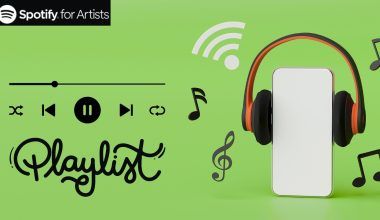Holiday and seasonal music on Apple Music offers artists a unique opportunity to reach audiences worldwide with festive songs. Whether it’s Christmas, Diwali, Hanukkah, or New Year’s Eve, these seasonal tracks can create a memorable experience for listeners. The festive spirit and nostalgic appeal of holiday music can bring joy and warmth to people, making it a crucial part of their celebrations. This comprehensive guide will explore the best practices, strategies, and tips for distributing your holiday music on Apple Music, ensuring that your tracks get the attention they deserve during the most festive times of the year.
The Unique Appeal of Holiday and Seasonal Music
Holiday and seasonal music holds a special place in the hearts of listeners. Unlike regular tracks, these songs are closely tied to emotions and memories associated with specific times of the year. For instance, Christmas carols evoke nostalgia and warmth, while upbeat tracks for New Year’s Eve can set the tone for celebrations. On Apple Music, holiday playlists and collections are popular among listeners, offering artists a chance to showcase their work to a broader audience. Understanding the emotional and cultural significance of these tracks can help you create music that resonates with listeners.
Preparing Your Holiday and Seasonal Music for Distribution
- Creating High-Quality Music
Quality is paramount when it comes to holiday and seasonal music on Apple Music. Start by ensuring that your music is professionally recorded and mixed. Consider using services like AI Mastering, which can enhance your tracks to meet industry standards. This step is crucial as it ensures that your music sounds polished and professional, making it more likely to be featured on playlists and attract listeners. - Metadata Accuracy
Metadata plays a significant role in how your music is discovered on Apple Music. Ensure that all metadata, including song titles, artist names, album names, and genres, are accurately filled out. For holiday and seasonal music, specific tags such as “Christmas,” “Hanukkah,” or “New Year’s” can help categorize your tracks appropriately, making them easier to find. - Eye-Catching Cover Art
Your album or single’s cover art should reflect the holiday theme and be visually appealing. Since cover art is often the first thing listeners see, it needs to grab their attention. Use festive colors, symbols, and imagery that align with the season. For instance, snowflakes, Christmas trees, or festive lights can be great additions to your cover art for a Christmas album. - Optimizing Your Artist Profile
A well-maintained Apple Music artist profile can make a significant difference in attracting listeners. Include a detailed bio, professional photos, and links to your social media profiles. Regularly update your profile with the latest news, releases, and events. An engaging profile helps create a deeper connection with your audience.
Effective Strategies for Distributing Holiday and Seasonal Music
- Strategic Release Timing
Timing your release is crucial for the success of holiday and seasonal music. Plan your release dates strategically, considering the peak times for each holiday. For example, Christmas music should ideally be released in early November to capitalize on the festive buildup. Releasing too close to the holiday might result in missing out on playlist placements and listener engagement. - Building Pre-Release Hype
Creating anticipation for your holiday music is essential. Start promoting your upcoming release a few weeks in advance. Use social media platforms, email newsletters, and streaming platforms like Spotify to share teasers, countdowns, and behind-the-scenes content. This strategy helps build excitement and ensures that your audience is eagerly awaiting your release. - Playlist Pitching
One of the most effective ways to get your holiday music noticed is by being featured on popular playlists. Apple Music has several holiday-themed playlists like “Holiday Hits” and “Winter Wonderland.” Reach out to playlist curators and submit your music for consideration. Ensure that your tracks align with the playlist’s theme and vibe, increasing the chances of being featured. - Creating Engaging Music Videos
Visual content can significantly enhance the appeal of your music. Consider creating music videos or lyric videos for your holiday tracks. These videos can be shared on platforms like YouTube and social media, providing an additional avenue for promotion. A well-made video can help tell the story of your song and connect with viewers on a deeper level. - Leveraging Social Media for Promotion
Social media is a powerful tool for promoting holiday and seasonal music. Platforms like Instagram, Facebook, Twitter, and TikTok allow you to engage with your audience in creative ways. Share festive content, create challenges, and encourage user-generated content. For example, you could start a dance challenge to one of your upbeat holiday tracks, encouraging fans to participate and share their videos. - Collaborations and Cross-Promotions
Collaborating with other artists or influencers can expand your reach. Look for opportunities to collaborate on holiday-themed content or cross-promote each other’s music. Joint live streams, guest features, or even holiday specials can attract new listeners and increase your visibility.
Utilizing Apple Music’s Unique Features
- Apple Music Sing and Lyric Integration
Apple Music Sing allows users to sing along to their favorite tracks with synchronized lyrics. Ensure that your holiday music has accurate lyrics available on the platform. This feature not only enhances the listening experience but also encourages engagement. - Apple Motion Graphics for Albums
Apple Music offers a unique feature called Apple Motion Graphics, which allows you to animate your album artwork. This feature can make your album stand out on the platform, offering a more immersive experience for listeners. Consider using festive animations that match the theme of your music. - In-App Social Media Integration
Apple Music’s integration with social media platforms enables you to share your music directly with followers. Use this feature to promote your holiday tracks, share updates, and interact with fans. Engaging with your audience on social media can lead to more streams and a stronger connection with listeners.
Post-Release Strategies and Analysis
- Monitoring Performance Metrics
After releasing your holiday music, it’s crucial to monitor its performance. Use the analytics provided by Apple Music for Artists to track metrics such as plays, listener demographics, and engagement. This data can help you understand your audience and tailor future releases to their preferences. - Responding to Listener Feedback
Pay attention to listener feedback and reviews. Positive feedback can be highlighted and shared, while constructive criticism can provide insights into areas for improvement. Engaging with listeners by responding to comments and messages can foster a loyal fan base. - Continuous Engagement and Future Planning
Even after the holiday season, continue engaging with your audience. Share highlights from the holiday period, thank your listeners, and keep them informed about upcoming projects. Start planning for the next holiday season early, considering the feedback and data from your previous releases.
Conclusion
Distributing holiday and seasonal music on Apple Music requires careful planning and execution. By focusing on quality, timing, and engaging promotion, you can maximize your reach and connect with listeners during the festive season. Remember, the holiday season is not just about making music but also creating a joyful experience for your audience. With the right strategies, your holiday tracks can become a cherished part of the season’s celebrations, bringing joy and cheer to listeners worldwide.
For further reading, explore these related articles:
- How to Get Verified on Spotify: A Comprehensive Guide
- What is Apple Music Style Guide?
- How to Edit Artist Profile Picture on Spotify and Apple Music
For additional resources on music marketing and distribution, visit Deliver My Tune.






